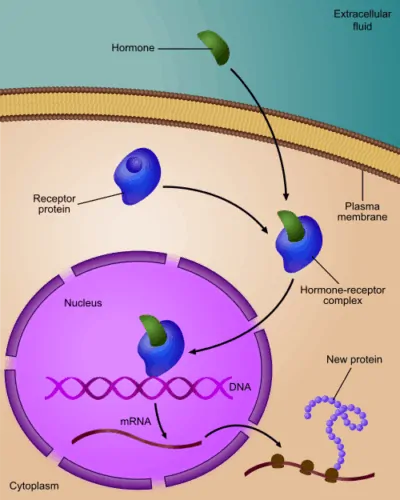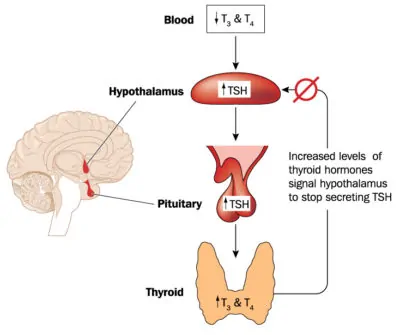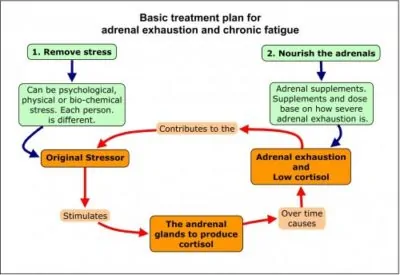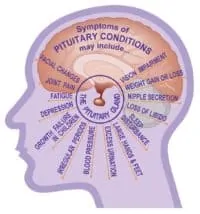Hormone Imbalances in Mould-Injured Patients
One of the biggest impacts of mould-related illness is the disturbance of multiple hormonal functions throughout the body. More than one body system is quite often put out of balance, resulting in many things operating abnormally or suboptimally at best. Hormonally speaking, when it comes to mould, this may present like a breakout of adult acne that morphs into weight gain, extreme blood sugar level changes, insomnia and frequent urination—seemingly unrelated symptoms, but all quite intertwined. Part of the reason for this is that our hormones are linked to one another by various feedback mechanisms such that over or underproduction of any one system causes imbalance in another and so on down the line.
Hormones are regulator proteins in the body. They run, monitor, and maintain organ functions of many different types. When we say the word, “hormone,” we usually think of sex hormones, or of our thyroid hormones. Sex and thyroid hormones are most definitely part of the equation, but there are others that are major players in our body functions that we hear far less about: Adrenal hormones and Growth hormone from the pituitary gland are very important determiners of energy, metabolism, mood, and overall health.

Mould: The Great Hormone Disruptor
To review, when moulds enter our bodies through inhalation, ingestion, or absorption via the skin, they can produce mycotoxins. Mycotoxins are very potent chemicals that are released as the moulds reproduce and go through metabolic processes. Mycotoxins can be very damaging and cause inflammation on the receptor sites of hormones. Receptor sites, or the biochemical place where the hormone stimulates a gland to function, may become resistant to production, and greatly decrease output (or in some cases, may stimulate MORE activity). This results in glands that effectively rob from other glandular systems to continue any type of function at all. Over time, the hormonal disruption causes baffling symptoms like feeling wired but tired, or rapid weight gain, even though diet and lifestyle has not altered.
Adrenal and Thyroid Hormones

An extremely common example of hormone disruption in mould patients can be illustrated in a disorder that we see with the thyroid gland. While the gland itself may seem to be functioning (“normal” TSH levels), its ability to convert thyroid hormone into useable form (Free T3) becomes impaired, and the patient has hypothyroid symptoms, such as fatigue, sluggishness, weight gain, constipation, and lower body temperature. The adrenal system then may then kick into overdrive and cortisol peaks to try to help the body function more normally, hence the “robbing from Peter to pay Paul” sequence continues.
The adrenal system helps the sex hormone system regulate and maintain homeostasis. In female mould patients, adrenal imbalance may manifest as a syndrome of estrogen dominance, in which the amounts of estrogen relative to the amount of progesterone are quite high. This can result in irregular periods, which may be excessively heavy. Bloating and other mood symptoms labeled as “PMS” may become extreme. Migraines, weight gain, and infertility are other manifestations of adrenal imbalances. The presence of endometriosis, a painful condition that presents as the abnormal growth of endometrial tissue outside of the uterus may present. (Note: We will post more on this condition in future articles.)

In male mould patients, testosterone may become abnormally low for age, as the precursor hormone DHEA from the adrenals may become quite deficient. Additionally, the tissues’ receptor sites for testosterone can become resistant due to the mycotoxins, and levels continue to be low even when the adrenal deficiency is addressed. Since women also need testosterone for normal hormonal function, we commonly see low levels in them as well. In both men and women, symptoms of low testosterone can look like loss of libido, loss of motivation, loss of muscle mass or a hard time building muscle, and debilitating fatigue. Sometimes hormonal therapy is attempted prior to getting out of the mould, but this is often counterproductive, because the extra testosterone can become estrogenic when the body is in the presence of mycotoxins. Thus, with whatever therapy you choose to take, make sure your doctor continues to monitor and check your levels to make sure everything is working as it should.
Growth Hormone and Mould

The master hormone of thyroid, adrenals, and of sex hormones is growth hormone. Growth hormone is produced by the pituitary gland located at the base/front of the brain. 
The Bottom Line When Mould Makes Hormones Go Haywire
Mould damage must be dealt with—it is both an environmental and a whole-body process. As we have repeated over and over, if an individual continues to breathe unhealthy, mycotoxin-laden air, then no treatment will be successful. The concomitant treatment of hormonal imbalances will then help recovery on many levels. Having thyroid levels tested and treated by a physician knowledgeable about the impacts of mycotoxins is also of paramount importance. Then, supporting adrenal function with nutritional products such as AdrenaMed, Thyromedica Plus can be helpful. But, as I always say, the MOST important piece of the puzzle is avoiding the cause of the hormonal problems—mould. Once mold is removed from the picture, healing can begin and the body will be able to recover.
Information based on Articles written By Dr. Susan Tanner, MD
www.sinusitiswellness.com

